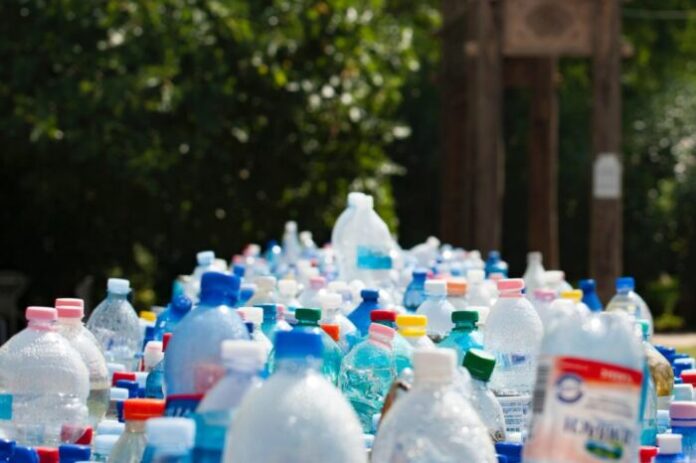
Plastic has entered our daily life. Every day we use dozens of disposable and non-disposable plastic objects, that we have to throw away. But how to recycle plastic waste? What goes in the appropriate container and what does not? We will answer this and many other questions with our section in collaboration with SmartRicicla. The first thing to know is that there are different types of plastic, each with different physico-chemical properties, which are used in sectors and for even very different purposes.
If properly recycled, plastic can be a great resource because it allows you to create new products without the need to produce virgin plastic and therefore with a lower environmental impact. According to the Corepla report, around 643,500 tons of plastic packaging waste from recycling was recycled in 2018. To this number must be added 376,000 tons deriving from independent recycling. In addition, over 383,000 tons of packaging were recovered.
If left to its fate, however, plastic is a big problem because it disperses into the environment, from rivers it reaches the sea up to our food chain. The biggest problem is microplastics, small particles that derive from the degradation of larger objects, and which represent a danger not only for the marine ecosystem but also for human health.
Plastic is not biodegradable and is not a naturally occurring element but is made in special plants using a mix of elements and in particular from the processing of oil and its polymers, namely propylene, ethylene, butadiene and finally styrene. All these elements are then processed together with gas, coal and common salt, which allow the creation of plastic materials, of which there are at least 50 varieties, all different from each other. For each type of plastic that is made, precise formulas have been studied that require a certain amount of heat for certain periods of time.
There are several plastic families on the market, each of which exploited in equally different areas. The first step to make a correct separate collection is to know the codes and symbols assigned to the plastic materials, which we list below:
 | Code 1 – PET polyethylene terephthalate – transparency, resistance and gas barrier make it suitable for the production of carbonated drinks bottles and trays. |
 | Code 2 – HDPE high density polyethylene – resistance and rigidity are functional characteristics for the production of cans and rigid containers. |
 | Code 3 – PVC polyvinyl chloride – in its pure state it is very rigid, but it can be mixed with other materials. It is used as a food container. |
 | Code 4 – PE-LD low density polyethylene – it is particularly flexible for this reason it is ideal for the production of bags for frozen foods or for food film. |
 | Code 5 – PP moplen – it can be both rigid and flexible and is used for example as a bottle of ketchup or mayonnaise or for pasta bags. |
 | Code 6 – PS polystyrene – it is used for the production of disposable plates, glasses and cutlery, clothes hangers, trays and packaging of household appliances |
 | Code 7 – other plastics – all other polymers, or even their combinations, fall into this category. |
As this table suggests, the types of plastics are numerous and each one, based on its physico-chemical properties, finds a field of application in very different sectors. But what happens when the time comes to dispose of them?
First of all, it is good to know which plastic objects go in the appropriate container to be recycled and which, instead, end up among the non-recyclable materials. The first rule to know is that all packaging can be recycled: bottles, jars, bottles, bags, envelopes, transparent films, disposable plates and glasses and trays can all be placed in the plastic container. On the other hand, toys, buckets, slippers, inflatable boats, balls, glasses, ballpoint pens, markers, flasks and garden or kitchen tools are not recyclable.
Recycling codes are applied to the packaging, which are functional for the correct identification of recyclable materials. They can therefore represent a great help in the event that the possible recyclability of an object is not known. Meanwhile, below we offer a more detailed list of what can be thrown into the plastic container and what is not.
WHAT TO THROW IN PLASTIC (PACKAGING)
- bottles (e.g. water, soft drinks, oil, juices, milk, etc …)
- bottles, dispensers (e.g. shampoo, shower gel, soap, detergents, home hygiene products, syrups, creams, sauces, yogurt etc …)
- cans for distilled water
- bottles of bleach or other substances used in the home (provided they are rinsed)
- plastic bags
- food trays (e.g. fruit, vegetables, snacks, etc …)
- newspaper and magazine films
- bags and sacks for food products
- plastic pots
- films and films
- plastic plates and glasses
WHAT SHOULD NOT THROW IN PLASTIC
- various plastic objects
- dirty plastic containers
- toys
- plastic cutlery
- syringes
- coffee pods
Read more:
- How to recycle: a guide to separate collection
- How to make the separate collection: recycling codes and symbols
- Separate collection: how to properly recycle organic waste
- How to make separate collection: what to throw in the unsorted waste




































